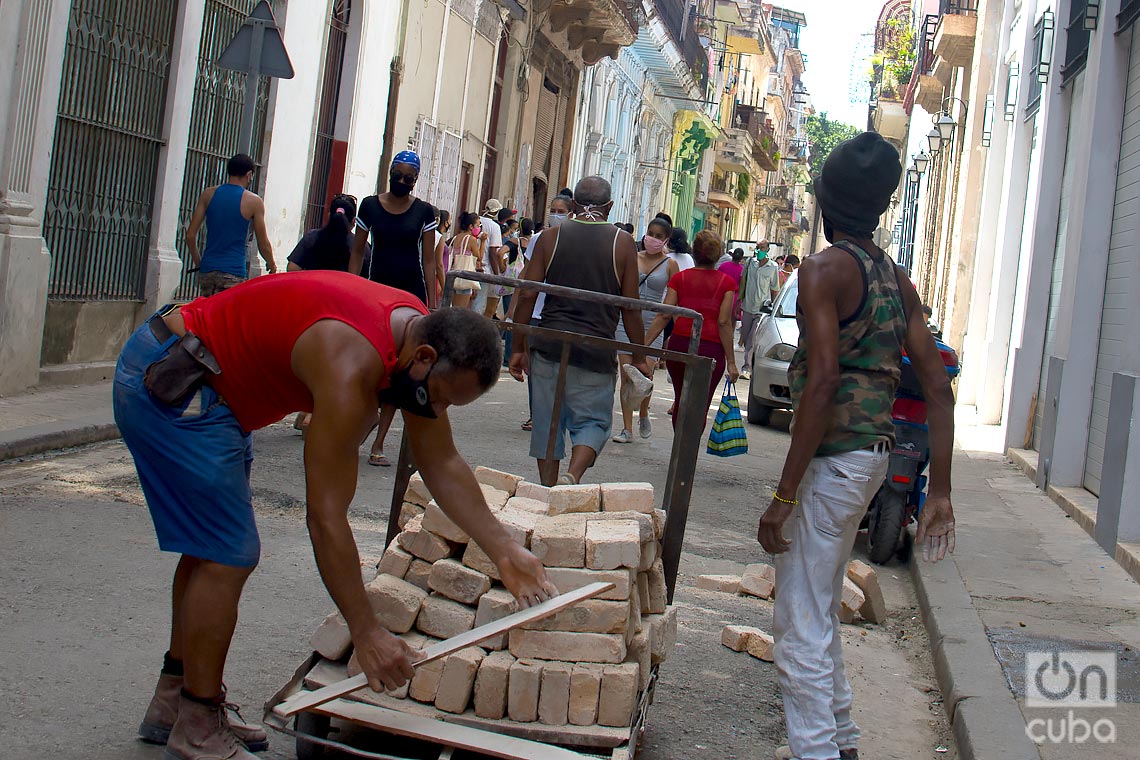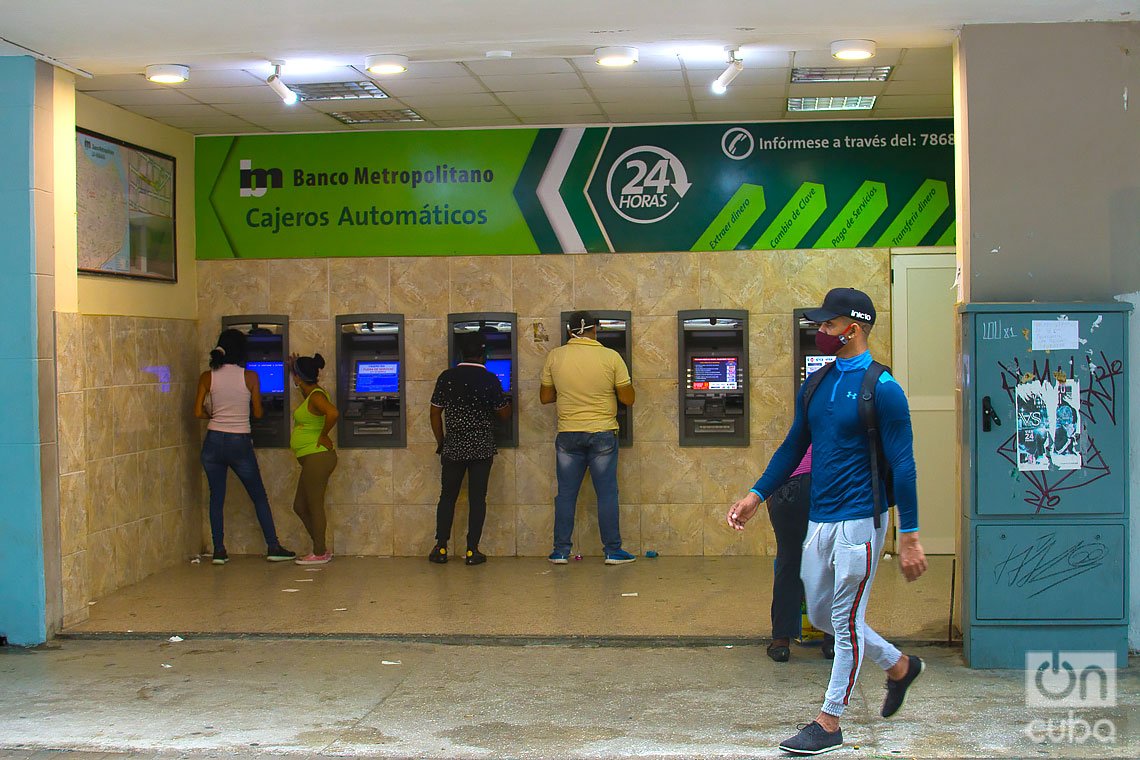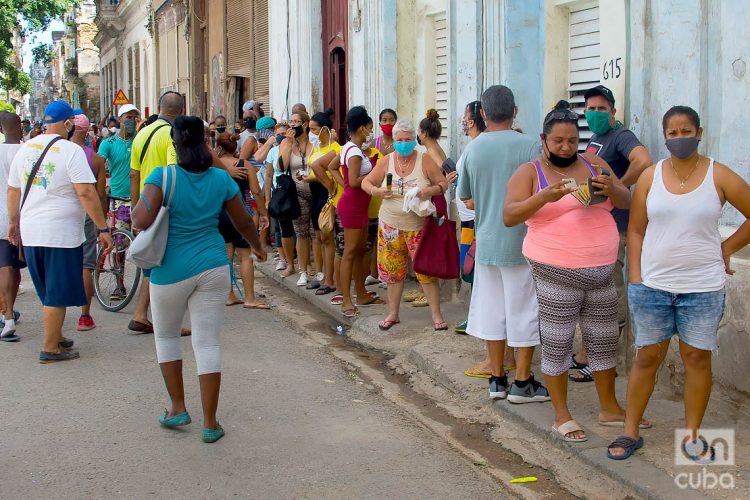Less than what a meringue lasts at the door of a school (Cuban popular saying). That was in Miguel’s opinion the time that Havana lasted in the first phase of the post-COVID-19 de-escalation. His opinion seems exaggerated if you look at it literally, but it is not at all if you look at it from the prism of popular wisdom. “We could see it coming” explains this retired person from Havana.
For just over a month, the Cuban capital remained on the first step of the return-to-normal ladder and, contrary to what happened in the rest of the Island, it did not manage to continue moving forward. Just a few days after entering the recovery stage, the capital authorities had to open two local transmissions detected events in the municipalities of Cerro and Diez de Octubre, and since then, the outbreaks have increased. And although the main Cuban city did not report autochthonous cases for two days in a row and met the health indicators for a short time to move on to the second phase, the truth is that it could never completely get off the tightrope.
With the cases reported at the end of this Friday, the main Cuban city has registered 1,890 positive cases, 57.4% of the 3,292 in the entire country since the pandemic began. Only in the last week, this figure has grown to 295 infected people in Havana.
Also, the capital has an incidence rate above 86 per 100,000 inhabitants, and maintains seven transmission events open, in the municipalities of Havana del Este (2), La Lisa (2), Playa (1), Plaza (1) and Marianao (1) – this Thursday an eighth positive case was detected in Tarará –, as well as a hundred outbreaks spread throughout its geography. The spread of infections, the high number of asymptomatic patients, and the presence of people whose source of infection has not been specified keep the alarms on for the health personnel and the Havana government.
What went wrong in Havana? The weight of the capital and Cuba’s new normal
“Everyone believed here that the pandemic was over”, says Miguel, carrying a grocery bag and with a mask properly adjusted over his face. They had not yet passed us to the first phase and this was already a party: thousands of people in the streets, kids playing on every street corner, people drinking rum, people with the face mask wrongly adjusted or without it. Even the doctors were less strict. Not to mention the lines to buy groceries, which is another big subject on its own”.
Miguel just comes from a queue. Or, really, two lines: one at the market and another one at the bakery. Those are the kind of lines from which he returned with purchases for just a few days, and in which he spent about an hour. It’s not that big of a deal, he assures, and even less relevant when compared to the ‘other-type-of-grocery-store’ queues. There, even with the police and all the organizational measures established to control the ‘coleros’ (people who profit from the big queues), “you can spend the whole morning waiting in line if they are selling chicken”. This, he says, is his daily walk, a walk in which now, a week after the return of the city to the epidemic phase, he continues to be amazed by the number of people and means of transport that he continues to see on his fewer errand days.
“It is not supposed to be like that. They have warned us on television over and over again, there have been Mesa Redonda television programs explaining the measures and trying to warn people, but nobody learns from other’s experience” he reflects.

The municipality in which he lives, Cerro, is considered one of the very high-risk neighborhoods in terms of Sars-Cov-2 transmission, according to the classification of the Havana authorities. However, in his area, in the ‘Latin American’ Popular Council, they have distributed again the homeopathic drug PrevengHo-Vir, but Manuel has not seen medical students or other health personnel doing visits and checkups for a long time. In the beginning, those medical students stopped by his house every day for a medical basic checkup. He considers that now there are not enough police officers or inspectors, not only to organize the queues but to enforce the government’s policies regarding COVID-19, to “call people’s attention” to the offenders and undisciplined who “continue as if nothing happened”.
The responsibility to overcome the new outbreak is certainly not only of the population, nor is it the responsibility of having regressed. The president of the Provincial Defense Council in Havana, Luis Antonio Torres Iríbar, acknowledged days ago that failures, indiscipline, excesses of confidence and protocol violations had been detected in entities and health institutions of the capital, as well as in officials in charge of enforcing the provisions to contain the disease. That is, in addition to the irresponsibility and low-risk perception of the citizens.
“If everyone doesn’t do their part,” Miguel reasoned” we won’t be able to overcome it. Otherwise, we will get to new years eve in this same situation. We are a blink of an eye away from September, as they say, and even the National Baseball Series could be suspended or postponed. With the desire that I have to enjoy a game from ‘Industriales’ at the Latino stadium!”
At the beginning of the week, shortly after announcing the setback of Havana, and then the return to the transmission phase, bars, beaches and swimming pool closures, suspension of public transportation, among other measures, the authorities warned that the city was in a “complex situation”. This meant that the city could outnumber the peak of infections registered months before. Once again, they urged the population and state entities, to comply with the provisions and with all the many-times-repeated dispositions.
The Minister of Public Health (Minsap), Dr. José Ángel Portal Miranda confirmed that the island was experiencing a re-outbreak of COVID-19, with the capital as the epicenter. He declared that the scenario could become uncontrollable if “the appropriate measures were not taken in due time”. The governor of Havana, Reinaldo García Zapata, also called for “individual and collective responsibility”; urged citizens “to respect physical distancing, social isolation, and compliance with hygienic-sanitary provisions”, and insisted on the importance of staying informed on the epidemiological situation to “act accordingly”.
“We do not have the right to violate what is established, so actions will be taken against the negligent and the irresponsible”, said García Zapata, who affirmed that the measures that were taken also responded to the popular opinions, and that most of the capital’s population has been “consistent” with the call of the Provincial Defense Council and has complied with the guidelines.
“Those are the attitudes and behaviors we need”, he said.
La Habana: estudio muestra zonas más vulnerables a la COVID-19
However, not a few people from Havana are concerned about the attitude of some citizens in the current circumstances. Those who think like Miguel, consider that the authorities should not be complacent with people who don’t assume the emergency, nor should tolerate gaps that allow the virus to continue spreading in and out of the city.
“I don’t have to leave the house to feel the noise from the street, the neighbors shouting what’s back in the stores, the cars honking, or the street vendors passing by. It is as if we continue in the first phase; it is almost like life as usual, but without buses”, says Yamilka from Old Havana. She also has to “do her things”, buy the essentials, and run some errands “like everyone else” – right now she comes from an ATM, she explains – but she no longer goes out “for a walk” or goes to visit her friends as she did before. “I don’t even go to the hairdresser,” she laments. “I dye my hair myself. I have a dye mix, my hands, and a mirror. Also, these are not times to be dressing up like you’re going out to enjoy a day outside”.

Yamilka, who rents rooms that are currently closed due to the pandemic, does not believe that all people from Havana are undisciplined and insensitive. She understands that many people are tired after several months of confinement and that they need to “take a break”. She says that as soon as “things got better” recently, she spent a few days with her family in a house on the beach, in Guanabo. “We really needed it”, and “you see,” she says, “we were right to do it because later on, COVID cases started to appear there. Right now, everything is blocked. If we had gone there a little later we could have gotten sick. I don’t even want to think about it”.
For this reason, she is bothered by the indifference and carelessness of “a few who do not understand that it is necessary to protect themselves”; those who continue to applaud at 9:00 at night – “although many don’t even applaud as before” – but they later ignore Sars-Cov-2 for the rest of the day. No matter how good Cuban doctors and medicines are against COVID-19, those who take unnecessary risks not only endanger themselves, but also their family, their children, their friends, and their community.
“The coronavirus is no joke, but a lot of people don’t seem to care”, she complains. What do people have to do bringing children to the streets or sitting on a corner talking quietly without a mask, or partying? She wonders. The worst thing is that if I say something to them, they ignore me. Or they get upset! As it turns out, I’m the bad guy in the movie, a meddler, just because I advise them to be careful”.
Yamilka also does not understand why are there so many people walking in the streets, on the banks, some even “lying one on top of the other” in the queues outside of the stores, “in the face of the police, who often do nothing against it.” She doesn’t understand how that happens, even when offices are back to being closed, when various procedures and payments of taxes and services are still on standby, when public transportation is suspended again and sitting in parks or doing other activities in public spaces are prohibited (at least in Havana) and they have advised time and again to keep distance and not to leave the houses unnecessarily.
“One thing is to do the big lines outside of the stores,” she reflects, “and quite another is to be unnecessarily close to each other when there’s plenty of space in the streets”.
“At least they no longer let people leave the city just like that”, she adds, “to go to Varadero, you have to show the tourist reservation and the negative result of a quick test. But the biggest problem is in here. Here in Havana is where we have to solve this for good; If not, things can continue to get complicated, and neither with authorization will they let anyone out nor will they be able to open the airports and welcome tourists. And how am I going to make a living if they don’t open the city and tourism starts? With everything closed, I cannot even rent a room to Cubans, for a little while, ‘you know’ … But at the pace we are going, I don’t think that will happen any time soon”.
“We had a setback because we were reckless and everybody lowered their guard” she concludes, “and trusting that everything is getting better, there is where danger hides”. We stumbled over the same stone again, despite being warned. Hopefully, the other provinces look at themselves in this mirror and do not allow a setback. Hopefully, here in Havana, we learn the lesson once and for all. We’ve only been in this for a week again and it seems to me like it’s been a lifetime”.






















